Profile of Iwana |
 |
Oshorokoma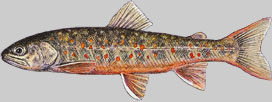 Amemasu  Nikko-iwana  Yamato-iwana  Gogi 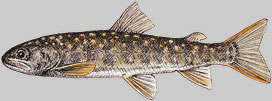 |
Japanese chars are two species that are Oshorokoma (S. curilus) of Hokkaido, Iwana (S. leucomaenis) of Hokkaido and Honshu.
Until now, Iwana (S. leucomaenis) were classified in detail to Amemasu, Nikko-iwana, Yamato-iwana, Kirikuchi and Gogi because of spot's size, color, etc.,
but Dr. Kinji Imanishi (1967) regarded those Iwana as local variety in the same species on the basis of the theory "clin" (HUXLEY, J. S. 1938; 1940),
and Iwana's color represent variety that range from light color to deep color.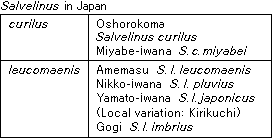 Oshorokoma have 5 or 10 parr marks and red spots on the body side. Their stomach turn into red or orange color in the spawning season. There are sea-run form and river resident, but most of them are river resident because Hokkaido is most southern habitat in the world. They are about 30cm (12in.) long. As a species, they are distributed in the Arctic Ocean and along the coast of the North Pacific Ocean, and in Japan they inhabit north of central Hokkaido. Oshorokoma in Japan was considered to be a subspecies of Dolly Varden in North America, but it was classified as a distinct species in 2023. The lake form is called Miyabe-iwana, and is a subspecies that inhabit in Lake Shikaribetsu and its inflowing rivers. They looks is similar to Oshorokoma, but have more gillraker counts than Oshorokoma. It is regarded as adaptation for eating zooplankton in the lake. Amemasu have body just like a log. They have white spots that are the same size of their pupil or bigger on the body side. Their color of body are from dark brown to dark gray or silver white. They inhabits the Mogamigawa River (Yamagata), the Pacific Ocean side of North of the Tonegawa River, Hokkaido, Northeast of Korean Peninsula, Saghalien, the Far Eastern Russia and Kamchatka Peninsula. There are sea-run form and river form. Sea-run forms are about 70cm (27.5in.) long or longer. |
|
|
Nikko-iwana have yellowish orange spots or pink spots that are the same size of their pupil on the body side, and spots of small size are scattered on the back.
They inhabits Sea of Japan side of North of the Hinogawa River (Tottori), the Pacific Ocean side of North of the Fujigawa River (Yamanashi) or the Sagamigawa River (Kanagawa).
Distribution's boundary of Nikko-iwana and Amemasu is not clear.
They are 30 to 60 cm (11.8 to 23.6in.) long. Yamato-iwana have vermilion spots up and down on lateral line. The spot color of Nikko-iwana becomes more and more pale as they grew up, but the spot color of Yamato-iwana are not pale even if they have grown up. They are 25cm (10in.) long. Iwana that live in Kii Peninsula is called Kirikuchi. They have spots of vermilion that are outline indistinct on the body side and white spots are also not clear. Now, they live slightly in only two places that are the Kawarabigawa River and the Tenkawa River in the upper area the Totsukawa River Nara. It is the southernmost habitats of Iwana (Salvelinus) in the world. Gogi is like Nikko-iwana, but they have clear white spots on the head. They inhabits from the Hiigawa River to the Takatsugawa River (Shimane), from the Yoshiigawa River (Okayama) to the Otagawa River (Hiroshima) and the Nishikigawa River (Yamaguchi). The Kabatanigawa of the Takatsugawa River and Agetani of the Nishikigawa River are the most western life spot of Iwana in Sea of Japan side and the Pacific Ocean side respectively in Japan. They are about 20cm (8in.) long. There is a view by Dr. Kinji Imanishi (1967) Gogi is subspecies of Iwana (S. leucomaenis). Gogi was derived from Kogi of Korean that means fish. |
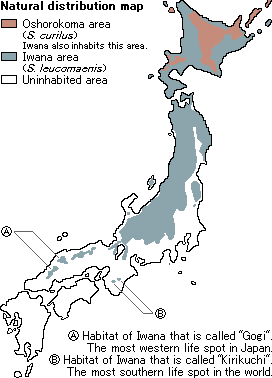 |
|
| References: Imanishi, K. (1989). Iwana and Yamame. Tokyo: Heibonsha. Kawanabe, H., & Mizuno, N. (ed.). (1993). Nihon no Tansuigyo [Japanese freshwater fish]. Tokyo: Yama-kei publishers. Matsubara, H. (1981). Sakeka Keiryugyo no Bunrui to Seitai [Classification and Ecology of Salmonid]. Besatsu Fishiing Iwana Yamame. Tokyo: Sanpou Publishing. Shiraishi, K., & Wda, S. (1993). Iwana no Kao [Iwana's Face]. Tokyo: Yama-kei publishers. Ministry of the Environment Ikimono Log. Red List and Red Data Book, Retrieved January 12, 2022. |
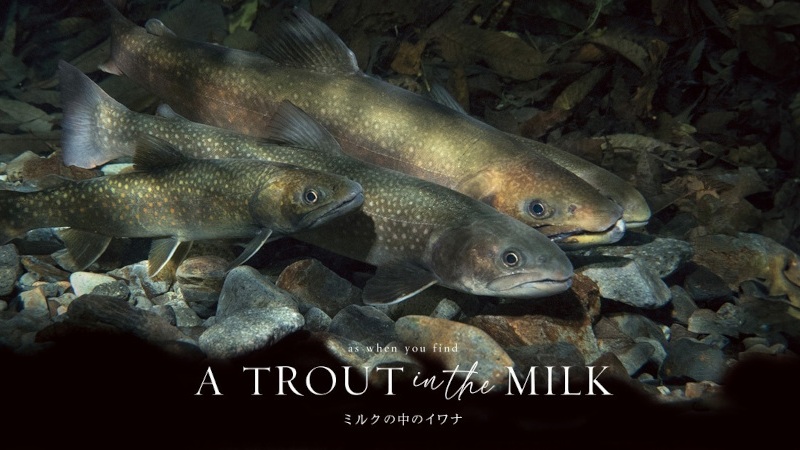 |
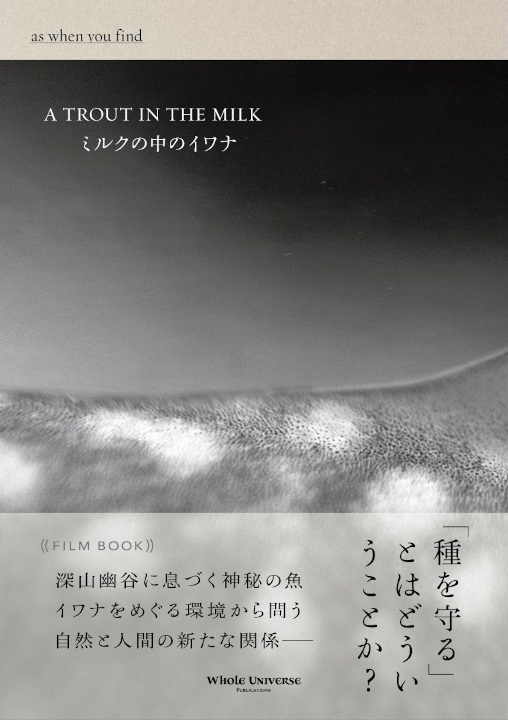 |
My drawings of trout were used in the scientific documentary film "A TROUT IN THE MILK" that reexamines the relationship between Japanese people and char and explores the vision for the future to better conserve the natural environment. Click on the images. |
| Spring | Early Summer |
Summer | Autumn | Winter | Profile | Links | Home | ||
| Trout1 | Trout2 | Trout3 | Salmon | Amago | Iwana |
Other | Atelier |
Paper Craft of Japanese Trout and the World Trout My Best Streams & Japanese Fly Fishing "Tenkara" © 1997 Yoshikazu Fujioka |